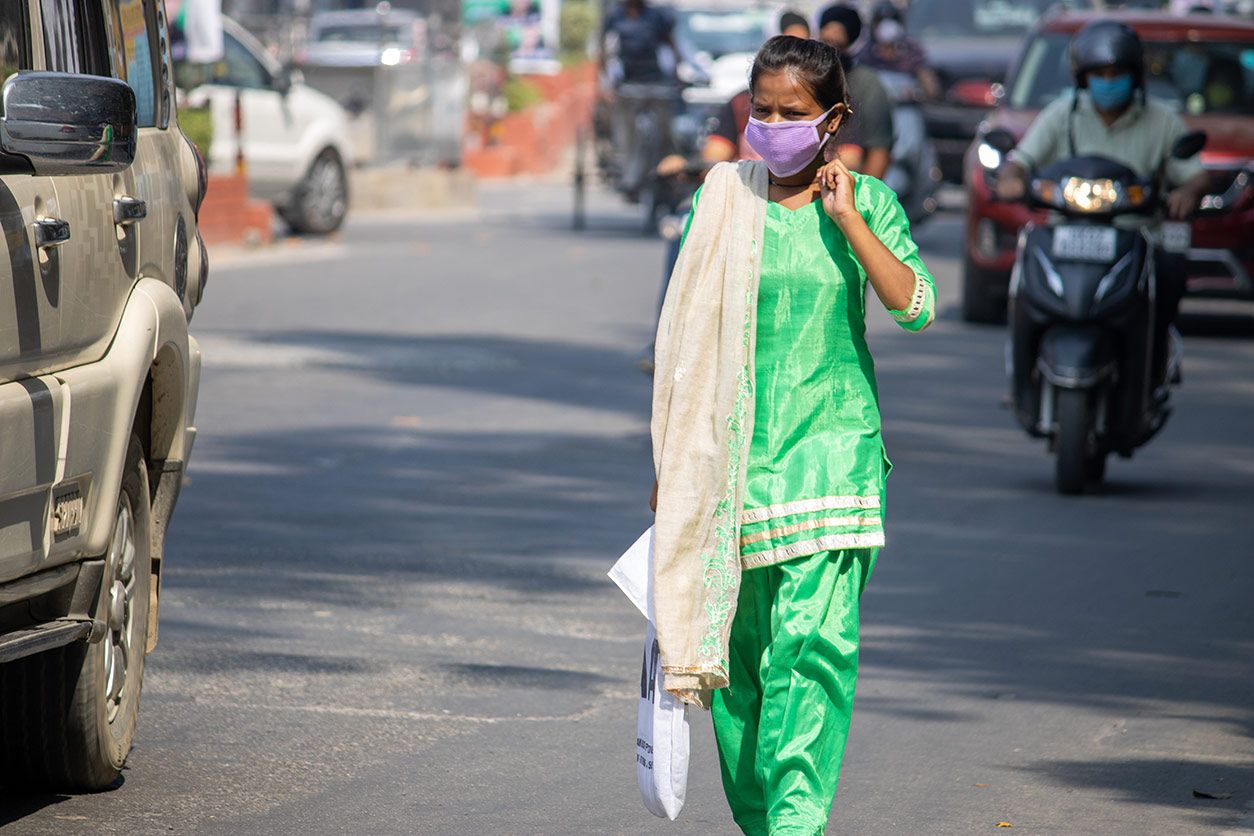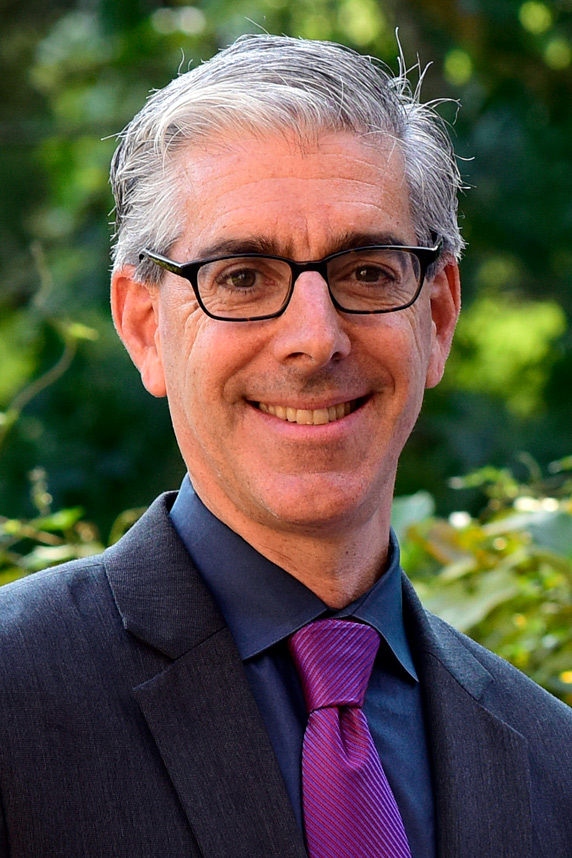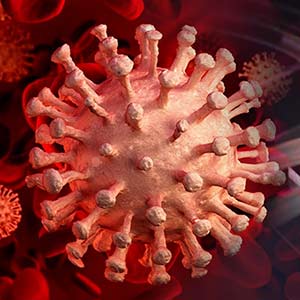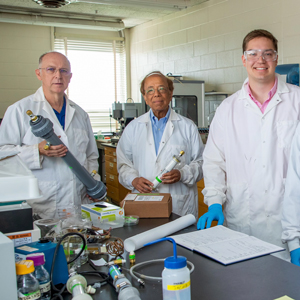Links between infectious diseases in India and climate, environment, and natural disasters were explored in a virtual conference that focused especially on COVID-19. NIEHS co-sponsored the Dec. 7-10 event. Participants discussed ways to apply the knowledge in practice and reviewed current research methods.
 A large body of evidence links temperature, humidity, and other environmental factors with infectious diseases such as malaria and cholera. Scientists are now exploring links with COVID-19. (Photo courtesy of Wintelineproductions.com / Shutterstock.com)
A large body of evidence links temperature, humidity, and other environmental factors with infectious diseases such as malaria and cholera. Scientists are now exploring links with COVID-19. (Photo courtesy of Wintelineproductions.com / Shutterstock.com) Balbus leads NIEHS efforts on climate change and human health and directs the NIEHS-WHO Collaborating Centre for Environmental Health Sciences. (Photo courtesy of Steve McCaw / NIEHS)
Balbus leads NIEHS efforts on climate change and human health and directs the NIEHS-WHO Collaborating Centre for Environmental Health Sciences. (Photo courtesy of Steve McCaw / NIEHS)The conference was co-organized by John Balbus, M.D., NIEHS senior advisor for public health, and Nitish Dogra, M.D., associate professor at the International Institute for Health Management Research (IIHMR; see see sidebar).
Trisha Castranio, NIEHS program manager for global environmental health, along with teams from NIEHS and IIHMR, handled the complicated logistics of managing dozens of presenters in two countries with widely separated time zones. Understanding Climate and Health Associations in India (UCHAI) and the Indian Meteorological Society co-sponsored the event.
“We hope the meeting raised awareness of the state of science on environmental factors associated with the COVID-19 pandemic in two of the countries most affected by COVID — India and the U.S.,” said Balbus. “We also wanted to provide a learning and mentoring opportunity for early career environmental health scientists in India.”
Critical challenges
According to the organizers, abundant evidence links environmental factors such as temperature and humidity with infectious diseases such as malaria and cholera.
However, in the case of COVID-19, the roles played by risk factors such as temperature, humidity, and air pollution are less clear. For example, indoor settings such as workplaces and schools pose concerns related to ventilation and air conditioning.
 Castranio’s projects center on the role of climate change in human health and pursuit of sustainable development and climate resilience. (Photo courtesy of Steve McCaw / NIEHS)
Castranio’s projects center on the role of climate change in human health and pursuit of sustainable development and climate resilience. (Photo courtesy of Steve McCaw / NIEHS)The e-conference addressed critical challenges that arise when multiple disasters such as cyclones and COVID-19 occur simultaneously. Over the course of four half-day sessions, participants focused, in turn, on climate, air pollution, extreme weather, and the indoor environment.
Participants viewed keynote lectures, expert sessions, panel discussions, and scholars’ poster and oral sessions.
Strong NIEHS presence
NIEHS Acting Deputy Director Gwen Collman, Ph.D., gave an address on behalf of NIEHS at the opening session. Balbus spoke during the final session and chaired a panel discussion on addressing extreme weather combined with COVID-19 challenges.
Srikanth (Sri) Nadadur, Ph.D., NIEHS health scientist administrator (see sidebar), summarized the indoor environment sessions. He directs the NIEHS air pollution and cardiopulmonary disease grant program
“These sessions provided an overview on the potential impacts of higher levels of air pollution on respiratory infections, using diverse examples from earlier episodes on how particulate matter air pollution can [worsen] infections and associated pathology,” Nadadur said.
Climate change and COVID-19
Weather and climate were hot topics at the meeting. For example, Dogra described the potentially harmful effects that more frequent cold waves in parts of India have on infectious diseases such as COVID-19. Thomas Kirsch, M.D., director of the National Center for Disaster Medicine and Public Health, talked about disaster preparedness and response in the age of climate change.
 Nadadur, who is part of the NIEHS Exposure, Response, and Technology Branch, oversees multiple mechanistic research programs. (Photo courtesy of Steve McCaw / NIEHS)
Nadadur, who is part of the NIEHS Exposure, Response, and Technology Branch, oversees multiple mechanistic research programs. (Photo courtesy of Steve McCaw / NIEHS)But there was at least one bright spot, reported by Shyamli Singh, Ph.D., from the Indian Institute of Public Administration. Serendipitously, the national lockdown in response to COVID-19 decreased the number of forest fires by approximately 80% in the Indian Himalayas.
Take-home messages
According to Balbus, an important theme was that death rates from infectious diseases do not always follow expectations. For example, COVID-19 mortality is, in some cases, unexpectedly lower in certain poorer districts where indoor air pollution exposures are higher.
In addition, mortality rates are lower in places with poor water sanitation. Some of the speakers questioned the causality of associations between air pollution exposures and COVID-19 severity. “There is a complex interplay between the immune system and confounding variables — like crowding — that may be causing high infection rates, rather than air pollution per se,” Balbus explained.
Another take-home message was that risks in indoor settings are much affected by air flow within a room. “If you are between a source of infection and the intake of the ventilation system, you should be more than six feet away,” Balbus cautioned.
(Janelle Weaver, Ph.D., is a contract writer for the NIEHS Office of Communications and Public Liaison.)









